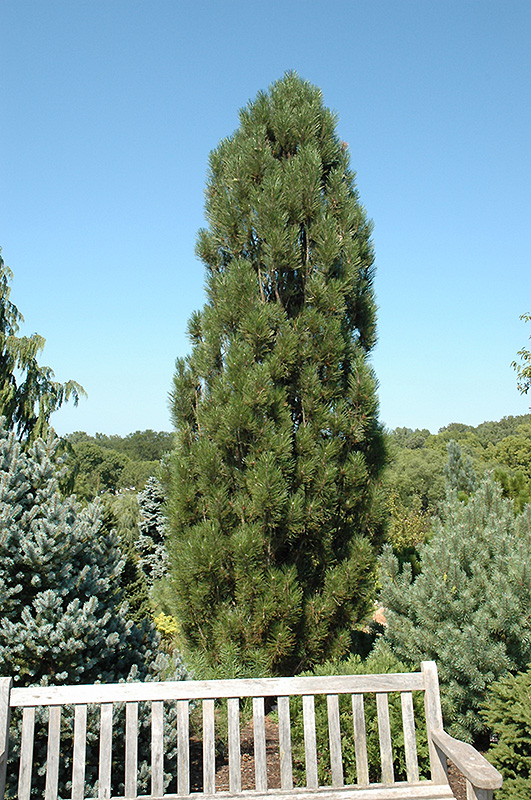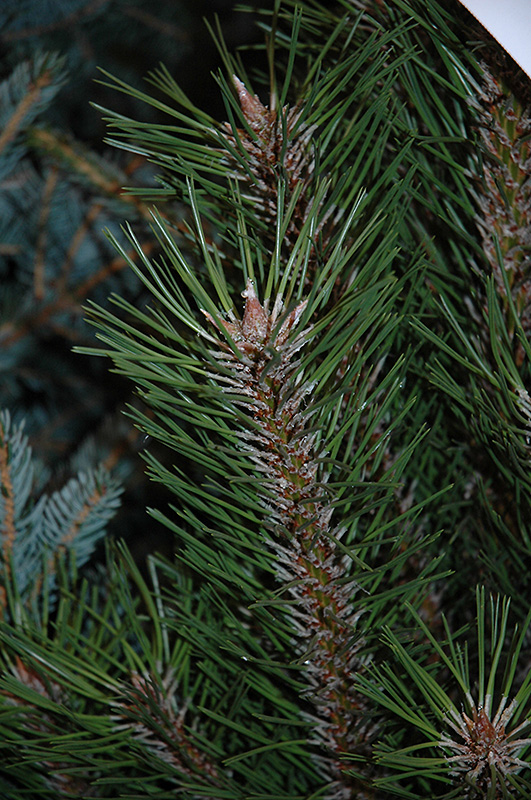>> Home
Arnold Sentinel Austrian Pine
Pinus nigra 'Arnold Sentinel'
Height: 20 feet
Spread: 5 feet
Sunlight:
![]()
Hardiness Zone: 4
Description:
An upright and columnar evergreen, perfect for screening where there isn't a lot of room; beautiful blue-green needles are held on upswept branches that are compact and dense; excellent also as a accent in a single planting because of its uniform habit
Ornamental Features
Arnold Sentinel Austrian Pine is primarily valued in the landscape for its rigidly columnar form. It has attractive bluish-green evergreen foliage. The needles are highly ornamental and remain bluish-green throughout the winter.
Landscape Attributes
Arnold Sentinel Austrian Pine is a dense multi-stemmed evergreen tree with a narrowly upright and columnar growth habit. Its relatively fine texture sets it apart from other landscape plants with less refined foliage.
This is a relatively low maintenance tree. When pruning is necessary, it is recommended to only trim back the new growth of the current season, other than to remove any dieback. Deer don't particularly care for this plant and will usually leave it alone in favor of tastier treats. It has no significant negative characteristics.
Arnold Sentinel Austrian Pine is recommended for the following landscape applications;
- Accent
- Vertical Accent
- Hedges/Screening
Planting & Growing
Arnold Sentinel Austrian Pine will grow to be about 20 feet tall at maturity, with a spread of 5 feet. It has a low canopy, and is suitable for planting under power lines. It grows at a medium rate, and under ideal conditions can be expected to live for 40 years or more.
This tree should only be grown in full sunlight. It prefers dry to average moisture levels with very well-drained soil, and will often die in standing water. It is considered to be drought-tolerant, and thus makes an ideal choice for xeriscaping or the moisture-conserving landscape. It is not particular as to soil type or pH, and is able to handle environmental salt. It is highly tolerant of urban pollution and will even thrive in inner city environments. This is a selected variety of a species not originally from North America.

